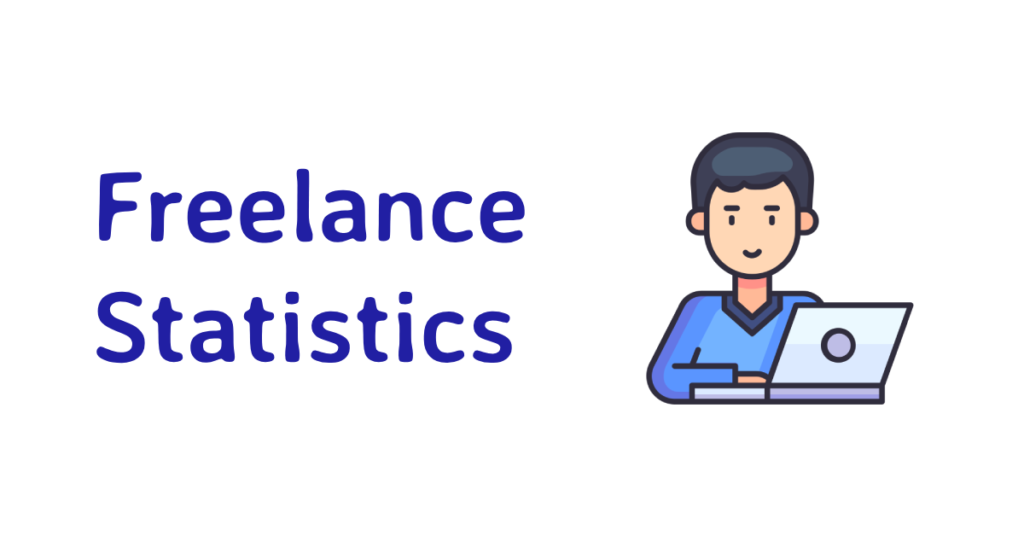137+ Internship Statistics Every Student Should Know In 2024
- Author: Eduklass
- Updated: March 11, 2024

Internships have become essential for students’ and recent graduates’ professional growth. They offer practical experience, networking opportunities, and industry insights.
In this article, we’ll examine internship statistics and their impact on career outcomes.
We’ll explore the most popular industries for internships and the percentage of interns who secure job offers, uncovering the true value of internships.
Internships Taken in America Over Time
| Graduating Year | Total Student enrollments in millions | Estimated number who completed internships (millions) |
| 2012 | 21.57 million | 4.63 million |
| 2013 | 21.14 million | 4.54 million |
| 2014 | 20.84 million | 4.48 million |
| 2015 | 20.66 million | 4.44 million |
| 2016 | 20.4 million | 4.38 million |
| 2017 | 20.23 million | 4.34 million |
| 2018 | 20.13 million | 4.32 million |
| 2019 | 20 million | 4.3 million |
| 2020 | 20 million | 4.3 million |
| 2021 | 19.35 million | 4.16 million |
| 2022 | 19.3 million | 4.15 million |
| 2023 | 19.1 million | 4.1 million |
Interns Are More Likely to Get Hired
According to NACE, paid interns are twice as likely to secure a job after graduation compared to non-interns.
On average, paid interns receive 1.61 job offers after graduation, while non-interns receive only 0.77 offers.
However, the employment advantage of internships varies across industries and companies. For example, 68% of interns receive full-time job offers from the companies where they interned. Some companies, such as PwC, offer full-time positions to over 90% of their interns.
Certain industries like accounting, technology, consulting, and politics prioritize hiring individuals with internship experience. Over 70% of employees at companies like IBM, Google, Facebook, Deloitte, KPMG, EY, PwC, and in the U.S. Congress have completed at least one internship.
Internships also play a significant role in securing specific roles. Law clerks, audit associates, reporters, and analysts are among the top roles that often require internship experience. Conversely, roles like systems administrators, insurance agents, and real estate agents are less likely to require internship experience.
Average Length Of Internship Employers Want
| Average Length | Percent Of Employers |
| 2-4 months | 5% |
| 3-4 months | 30% |
| 5-6 months | 25% |
| 7-9 months | 9% |
| 12 months | 30% |
Students Use Internships to Understand Jobs
During internships, students gain valuable skills and experience that enhance their employability and prepare them for future careers.
According to the NSCI, the majority of students pursue internships to gain experience in a specific field, while others use internships to explore career options.
Internships offer firsthand experience not typically available in classrooms. Students have the opportunity to learn from professionals in their chosen field, gaining insights and practical knowledge. Jennifer Lennox, VP of People and Culture at AutoCanada, emphasizes that internships allow students to learn from professionals who possess practical experience.
According to the NACE 2023 Internship and Co-op Report, interns typically engage in analytical work, problem-solving, and project management. While these tasks may be entry-level, they develop skills highly valued by employers.
Project management and analytical skills are particularly sought-after, according to LinkedIn, making internships an excellent opportunity for students to acquire these in-demand skills.
General Internship Statistics
- In the US, there are more than 300,000 interns per year.
- There are 60.80% paid internships and 39.20% unpaid internships in the US.
- 60% of recent graduates and college freshmen complete an internship.
- More than 70% of interns receive a job offer from the organization where they interned. 14% of these job openings are part-time, and 50% of them are full-time.
- According to the research from StandOut CV, 21.5% of college students do an internship. (Approx 4.17 million students)
- It is estimated that there will be around 4.1 million internships in the USS in 2023.
- According to StandOut CV data, two in five internships in the US are unpaid. This means there will be around 1.66 million unpaid interns by 2023.
- 31% of student interns start their internships after finishing college.
- The average of the interns is 17 years old.
- Almost 67.15% of the interns are white.
- According to StandOut CV research, two in three interns (66.4%) secure a full-time job. They also earn a $15,000 higher salary than those who did not do an internship.
- 70% of firms offer successful interns long-term, full-time positions.
- Your likelihood of finding work after graduation increases by 85% if you complete an internship.
- Internship completion increases employment offers to students by 16% compared to those who don’t.
- There are 57% full-time employment offers.
- Not knowing where to look for internships was the primary deterrent for 59.4% of people. (2021 NSCI Report)
- The selection process for interns typically takes eight and a half months. (NACE, 2021)
- The most typical method of finding potential interns is through open applications. (NACE, 2021)
- 60% of the participants spent the majority of their time managing and doing analyses. (NACE, 2021)
- 67.9% of students take part in internships in order to get experience in a particular field of work they hope to follow. 24.8% participate in internships to learn more about potential careers. (2021 NSCI Report)
- An intern can make up to $20.76 per hour on average, much like in the United States of America.
- In the US, almost 39.2% of internships are unpaid work.
- More than 60.8% of internships provide pay.
- Data from zippa.com show that 56% of all interns obtained employment offers from the organization they interned for.
- More than 14% of all interns in the US are offered part-time jobs after completing their internship.
- After finishing their training time, about 70% of interns in the US receive a job offer from the organization where they interned.
- At the company where they interned, 80% of interns who receive job offers accept them.
- Over 14% of businesses say they use signing bonuses to turn interns into full-time employees, which may explain the high acceptance rates for intern positions.
- Less than 20% of US interns are given the option to join an insurance program sponsored by their company.
- Financial services are the most popular industry for interns, accounting for 19% of the internships.
- Regardless of whether they are paying or not, 18% of firms give health insurance to their interns.
- 31% of students start internships after graduating from college, per statistics from FinancesOnline.
- In 2020, more than 64% of companies ended their internship programs. (CNBC)
Paid Internship Statistics
- More than 60% of internships give compensation. (Internships at Chegg)
- Paid internships are 52% more likely than unpaid internships to lead to a full-time job offer.
- According to the experts’ assessment, businesses are more inclined to provide paid internships in order to attract fresh talent and keep dependable and motivated full-time employees.
- The intern report claims that receiving compensation during your internship can greatly impact your ability to receive job offers and full-time employment.
- In the US, interns made an average of $2.76 per hour in 2020. Since 2019, when intern hourly salaries stood at $19.54, the rate has climbed by $1.22.
- While Microsoft pays a median rate of $7,366 and LinkedIn pays $7,500, Meta’s internship rate is $8,000 per month. While at Amazon, interns are paid $8,000 per month.
- Roblox offers the highest-paying internships, with an average salary of $9,667 per month. (2022, Glassdoor)
- Compared to only 26% of part-time interns, 71% of full-time interns were paid. (NBER, 2020)
- Paid internships had a 66.4% job success rate, compared to 43.7% for unpaid ones. (NACE, 2019)
- Leading tech firms like Amazon, Meta, Microsoft, Apple, and Google also offer highly paid internships. (2022, Glassdoor)
- 62.4% of survey participants expressed satisfaction with their pay. (CCWT, 2020)
- Employers only give signing bonuses in 14% of cases. (NACE, 2021)
- A signing bonus is typically just around $2,500. 2020 (CompareCamp)
- Less than 18% of businesses provide medical insurance, whereas 26% offer 401(k) plans. 2020 (CompareCamp)
- As 88% of the next generation of workforce places importance on money, company culture is crucial. (Tallo, 2021)
Highest Paying Internships in the US
| Company | Median Monthly Rate |
| $8,000 | |
| Amazon | $7,725 |
| Salesforce | $7,667 |
| $7,500 | |
| Microsoft | $7,250 |
| Uber | $7,167 |
| Bloomberg LP | $7,000 |
| Capital One | $7,000 |
| Apple | $6,667 |
| Back of America | $5,833 |
| Boeing Co. | $4,167 |
| Dell | $4.333 |
Unpaid Internship Statistics
In the United States, over 40% of internships are unpaid, with the majority (39.3%) found in government, non-profit, and social service sectors. Approximately 500,000 Americans work as unpaid interns annually.
Non-profit organizations (54.7%), government agencies (22.7%), and for-profit organizations (around 23%) offer unpaid internships. In 2021, 43% of workers didn’t receive payment for their efforts.
Interestingly, candidates applying for unpaid internships are more likely to receive responses from employers. In 2020, an estimated one to half a million Americans worked as unpaid interns.
Should You Do an Internship?
Whether you should pursue an internship or another work-based experience depends on various factors, including your industry interests, financial situation, and career goals.
While internships can enhance employability, this varies by industry and company. Certain industries like politics, accounting, tech, and consulting often prioritize hiring individuals with internship experience. Companies like PwC frequently extend full-time offers to their interns.
Whether the internship is paid also influences job prospects. Unpaid interns are less likely to receive job offers, although they still have higher employability than non-interns. However, unpaid internships may not be financially feasible for everyone.
Internships offer valuable experience, skills development, and networking opportunities. They provide insights into company culture and industry dynamics, helping students refine career goals.
Overall, internships can aid in self-discovery and skill enhancement, preparing students for future career success.



